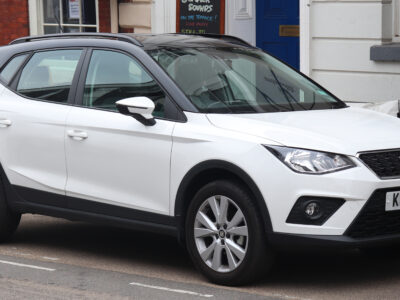
Hyundai Tucson Weight: Complete Guide to Curb, Gross, and Payload Specs (2005–2025)
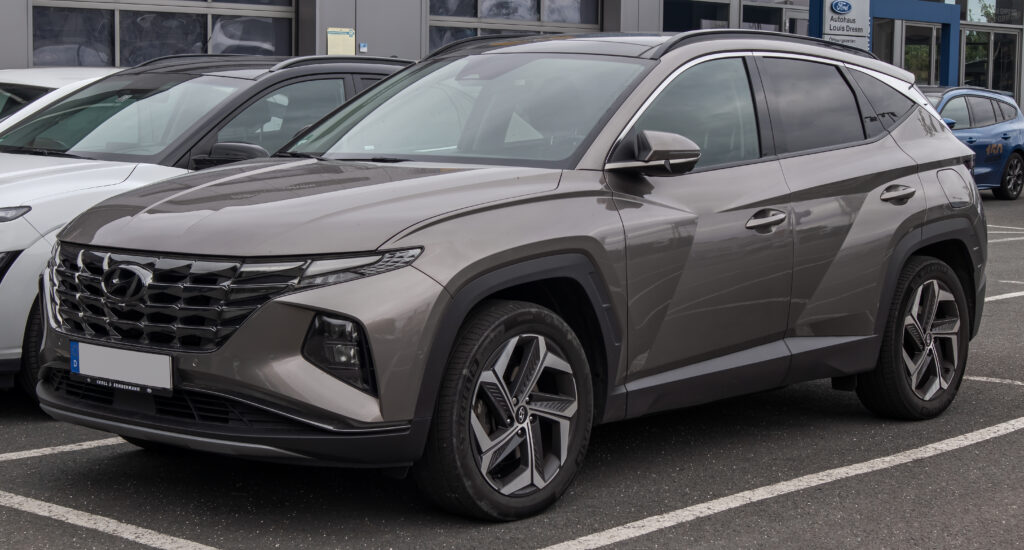
The Hyundai Tucson has evolved from a compact crossover into one of the most balanced SUVs in its class—delivering style, performance, and practicality. But when it comes to choosing the right model, vehicle weight plays a surprisingly important role in performance, fuel economy, and towing ability.
In this guide, we’ll take a deep dive into every Hyundai Tucson weight specification from 2005 to 2025, exploring how it impacts handling, efficiency, and capability. Whether you’re comparing model years or trying to understand the curb vs. gross weight difference, this article has you covered.
- Hyundai Tucson Weight Overview
- Understanding Weight Terminology
- Hyundai Tucson Weight by Generation
- Curb Weight of Hyundai Tucson
- Gross Vehicle Weight (GVWR)
- Payload and Towing Capacities
- Weight Comparison
- Impact of Weight on Fuel Efficiency
- Weight Distribution and Handling
- Hybrid and PHEV Weight
- Materials Used for Weight Reduction
- How Cargo and Passengers Affect Weight
- Roof Load Limit
- Weight vs. Performance and Acceleration
- FAQs on Hyundai Tucson Weight
- Final Thoughts
Hyundai Tucson Weight Overview
Across its generations, the Hyundai Tucson’s weight has steadily increased due to new technology, safety systems, and hybrid drivetrains.
| Generation | Years | Curb Weight (lbs) | Curb Weight (kg) | Gross Weight (lbs) | Gross Weight (kg) |
|---|---|---|---|---|---|
| 1st Gen (JM) | 2005–2009 | 3,200–3,600 | 1,450–1,640 | 4,500–4,800 | 2,040–2,175 |
| 2nd Gen (LM) | 2010–2015 | 3,300–3,700 | 1,500–1,680 | 4,600–4,900 | 2,100–2,220 |
| 3rd Gen (TL) | 2016–2020 | 3,300–3,750 | 1,495–1,700 | 4,675–4,960 | 2,120–2,250 |
| 4th Gen (NX4) | 2021–2025 | 3,500–4,400 | 1,590–1,995 | 4,795–5,324 | 2,175–2,415 |
The 2025 Tucson stands as one of the most refined versions yet, offering a balanced weight-to-performance ratio across petrol, diesel, hybrid, and plug-in hybrid variants.
Understanding Weight Terminology
Before diving into the data, let’s clarify the common weight terms used in automotive specifications:
- Curb Weight: The weight of the vehicle without passengers or cargo, but with all fluids and a full fuel tank.
- Gross Vehicle Weight (GVWR): Maximum allowable total weight, including the car, passengers, and cargo.
- Payload Capacity: The difference between GVWR and curb weight, representing the maximum weight you can safely carry.
- Towing Capacity: The maximum trailer weight the Tucson can safely tow, often influenced by drivetrain and engine.
Hyundai Tucson Weight by Generation
First Generation (2005–2009 | Tucson JM)
This era introduced the Tucson as a compact SUV with solid off-road capability.
| Model | Fuel Type | Curb Weight (kg/lbs) | Gross Weight (kg/lbs) |
|---|---|---|---|
| 2.0 Petrol | 1437 kg / 3168 lbs | 2050 kg / 4519 lbs | |
| 2.0 4WD | 1517–1554 kg / 3344–3426 lbs | 2140 kg / 4718 lbs | |
| 2.7 V6 4WD | 1568 kg / 3457 lbs | 2190 kg / 4828 lbs | |
| 2.0 CRDi 4WD | 1571–1660 kg / 3463–3660 lbs | 2170–2260 kg / 4784–4982 lbs |
These models were among the lightest Tucson variants ever produced, providing nimble handling and moderate towing capacity.
Second Generation (2010–2015 | Tucson LM)
With sleeker aerodynamics and improved structure, weight increased slightly while efficiency improved.
Typical curb weight: 3,350–3,650 lbs (1,520–1,660 kg)
Gross weight: 4,630–4,850 lbs (2,100–2,200 kg)
Third Generation (2016–2020 | Tucson TL)
Hyundai modernized the Tucson with more safety features, optional AWD, and turbocharged engines.
You may be interested in reading Nissan Juke Trim Levels Explained (2010–2025): Full Guide to Every Model, Engine & Feature
Nissan Juke Trim Levels Explained (2010–2025): Full Guide to Every Model, Engine & Feature| Engine | Fuel Type | Curb Weight (kg/lbs) | Gross Weight (kg/lbs) |
|---|---|---|---|
| 1.6 GDI | Petrol | 1454 kg / 3205 lbs | 1895 kg / 4178 lbs |
| 1.6 T-GDI 4WD | Petrol | 1583–1609 kg / 3490–3547 lbs | 2170–2190 kg / 4784–4828 lbs |
| 2.0 CRDi 4WD | Diesel | 1662–1690 kg / 3664–3726 lbs | 2250 kg / 4960 lbs |
Fourth Generation (2021–2025 | Tucson NX4)
The latest Tucson lineup offers petrol, hybrid, and plug-in hybrid powertrains, showcasing Hyundai’s advanced lightweight materials and EV-focused engineering.
| Model | Fuel Type | Curb Weight (kg/lbs) | Gross Weight (kg/lbs) |
|---|---|---|---|
| 1.6 T-GDI | Petrol | 1538–1696 kg / 3391–3739 lbs | 2065–2100 kg / 4553–4630 lbs |
| 1.6 T-GDI 4WD | Petrol | 1633–1764 kg / 3600–3889 lbs | 2170 kg / 4784 lbs |
| Hybrid AWD | Petrol-Electric | 1709–1830 kg / 3768–4034 lbs | 2245 kg / 4949 lbs |
| Plug-in Hybrid | Petrol-Electric | 1893–1999 kg / 4173–4407 lbs | 2415 kg / 5324 lbs |
Curb Weight of Hyundai Tucson
The curb weight varies based on generation and drivetrain:
- 2005–2009: ~3,300 lbs
- 2016–2020: ~3,450 lbs
- 2021–2025: ~3,578–4,400 lbs
The modern hybrid versions add roughly 200–400 lbs compared to the gas models due to their battery packs.
Gross Vehicle Weight (GVWR)
The Tucson’s GVWR typically ranges from 4,500 lbs to 5,300 lbs.
This figure represents the maximum allowable total weight of the vehicle when fully loaded with passengers, fuel, and cargo.
Payload and Towing Capacities
- Payload: Around 1,200 lbs (544 kg)
- Towing capacity: Up to 2,000 lbs (907 kg) depending on engine and drivetrain
AWD models tend to handle towing slightly better due to enhanced traction, while hybrids balance efficiency with pulling power.
Weight Comparison
| Model | Curb Weight (lbs) | Difference from Tucson |
|---|---|---|
| Hyundai Tucson | 3,300–3,600 | — |
| Toyota RAV4 | 3,370–3,600 | ±0–100 lbs |
| Hyundai Santa Fe | 3,800–4,000 | +300–400 lbs |
| Hyundai Kona | 2,900–3,300 | −300–400 lbs |
The Tucson sits squarely in the middle of the compact SUV segment—light enough for efficiency, heavy enough for comfort and safety.
Impact of Weight on Fuel Efficiency
A heavier Tucson consumes slightly more fuel, but Hyundai offsets this through aerodynamic design and engine optimization.
| Model | Approx. MPG (Combined) | Weight Influence |
|---|---|---|
| 1.6 T-GDI | 27 MPG | Balanced performance |
| Hybrid AWD | 38 MPG | Efficient hybrid offset |
| Plug-in Hybrid | 35 MPG (EV mode + gas) | Battery adds weight but saves fuel |
Weight Distribution and Handling
Most Tucson variants feature an approximate 60:40 front-to-rear weight distribution—ideal for stability and precise cornering.
This design ensures better traction under acceleration and predictable handling even in slippery conditions.
Hybrid and PHEV Weight
Hybrid systems add extra mass due to batteries and electric motors:
- Hybrid: ~3,750–3,950 lbs
- Plug-in Hybrid (PHEV): ~4,200–4,400 lbs
While heavier, they deliver better fuel economy and smoother power delivery, thanks to electric torque assistance.
You may be interested in reading Nissan Juke Trim Levels Explained (2010–2025): Full Guide to Every Model, Engine & Feature
Nissan Juke Trim Levels Explained (2010–2025): Full Guide to Every Model, Engine & Feature Nissan Juke vs Renault Captur: Ultimate Comparison of Compact SUVs (2025 Guide)
Nissan Juke vs Renault Captur: Ultimate Comparison of Compact SUVs (2025 Guide)Materials Used for Weight Reduction
To combat the additional mass from hybrid systems and safety reinforcements, Hyundai uses:
- High-strength steel for rigidity and impact safety
- Aluminum components (hood, suspension arms) for lightness
- Composite panels to lower overall body mass
This strategy ensures the Tucson maintains agility without sacrificing durability.
How Cargo and Passengers Affect Weight
Every passenger adds about 150 lbs (68 kg) on average.
For example, a Tucson with four adults can gain nearly 600 lbs, bringing total operational weight close to its GVWR. Always factor this in when loading cargo or towing.
Roof Load Limit
The Tucson’s roof rack limit averages 150 lbs (68 kg)—ideal for bikes, skis, or roof boxes.
Exceeding this can compromise handling, fuel efficiency, and roof structure integrity.
Weight vs. Performance and Acceleration
The Tucson’s acceleration is influenced by its mass:
- Lighter trims (FWD gas) feel more agile and responsive.
- Heavier hybrids/PHEVs trade a bit of acceleration for smoother power and stability.
Despite the weight variation, all models maintain strong braking and cornering behavior due to Hyundai’s advanced electronic stability control.
FAQs on Hyundai Tucson Weight
1. What is the curb weight of a 2025 Hyundai Tucson?
Approximately 3,578–3,950 lbs, depending on trim and drivetrain.
2. How much does a fully loaded Tucson weigh?
Close to 4,800–5,300 lbs (GVWR) when packed with passengers and cargo.
3. Is the Tucson heavier than the RAV4?
Slightly lighter or about the same, depending on configuration.
4. What’s the difference in weight between FWD and AWD models?
Around 100–200 lbs—AWD versions weigh more due to additional components.
 Nissan Juke Trim Levels Explained (2010–2025): Full Guide to Every Model, Engine & Feature
Nissan Juke Trim Levels Explained (2010–2025): Full Guide to Every Model, Engine & Feature Nissan Juke vs Renault Captur: Ultimate Comparison of Compact SUVs (2025 Guide)
Nissan Juke vs Renault Captur: Ultimate Comparison of Compact SUVs (2025 Guide) Vauxhall Corsa Models: A Complete Guide to Every Trim and Variant in the UK
Vauxhall Corsa Models: A Complete Guide to Every Trim and Variant in the UK5. How does weight affect the Tucson’s ride comfort?
Heavier trims tend to offer smoother, more composed rides due to increased suspension damping and body stability.
Final Thoughts
The Hyundai Tucson’s weight story reflects its evolution from a light, compact SUV to a technologically advanced crossover. Every pound contributes to better safety, refinement, and capability. Whether you choose a gas, hybrid, or plug-in model, understanding the weight profile helps you appreciate how Hyundai engineered this SUV for the perfect balance between efficiency and performance.
If you want to know other articles similar to Hyundai Tucson Weight: Complete Guide to Curb, Gross, and Payload Specs (2005–2025) you can visit the category Models.
Deja una respuesta

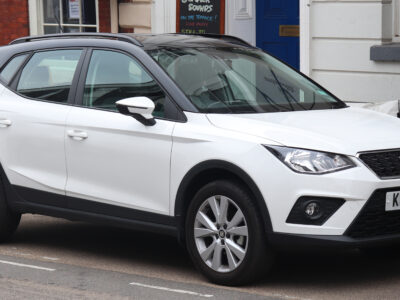
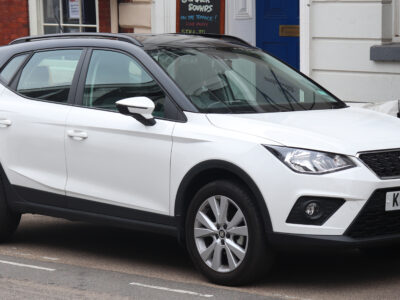
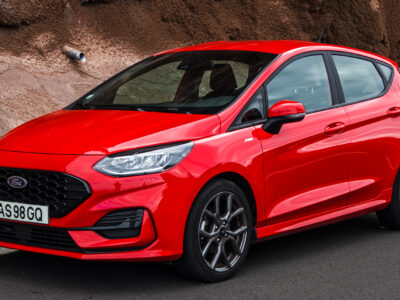


More content of your interest